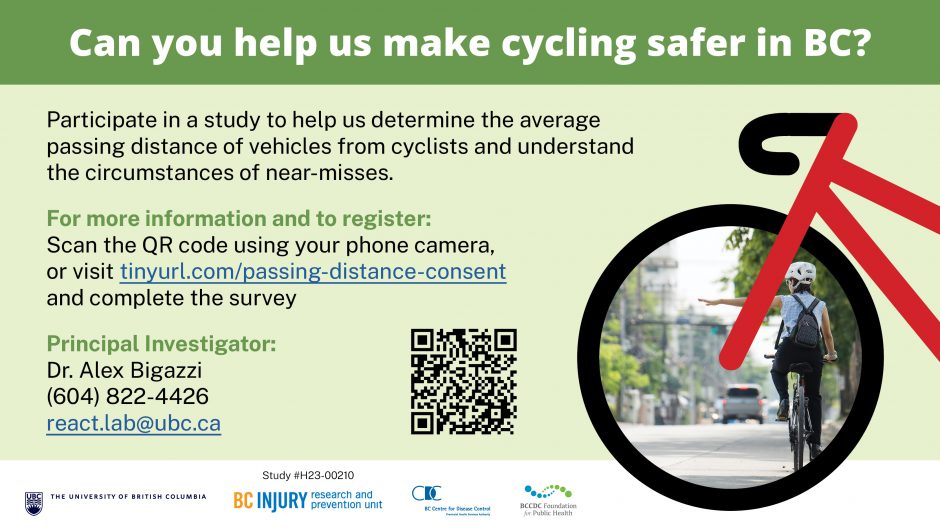Bike riding has well-established benefits on physical and mental health, and modal shift away from car-based travel has the potential to substantially contribute to reduced emissions. The BC government aims to encourage a shift to active modes of transport and reduce GHG emissions as per the Clean BC plan and Move Commute Connect: B.C.’s Active Transportation Strategy, which has a goal of doubling the number of trips taken with active transport by 2030. One of the largest deterrents to cycling is perceived and actual risk of injury. Of concern, the rate of cyclists and pedestrian deaths in B.C. have not improved over the past 20 years. Although very few cycling trips result in injury, cyclists frequently experience “near-miss” events, which directly influence cyclists’ perceived safety and willingness to cycle, and can also indicate actual injury risk.
One possible regulatory intervention to improve cyclist comfort and safety is a minimum cyclist passing distance, endorsed by HUB Cycling, the B.C. Cycling Coalition, the Trial Lawyers Association of B.C., and others. To understand the effectiveness of minimum cyclist safe passing distance legislation, a baseline of the current lateral vehicle passing distance that cyclists experience on all types of roads needs to be measured. This project aims to establish for the first time in BC empirical data on representative lateral distances when vehicles pass cyclists. We also seek to understand the circumstances and characteristics of near-miss and close passing events, as deterrents to bicycle riding.
To achieve these aims, this research project is a collaboration between the REACT Lab and the BC Centre for Disease Control (Megan Oakey and Tobin Copley), BC Injury Research and Prevention Unit (Ian Pike), and Monash University, Australia (Ben Beck). The gold standard to quantify lateral passing distance is in situ, where a device is installed on a bicycle and a sample of cyclists ride on a variety of facilities. We will use a novel, state-of-the-art on-bicycle data collection system, which was developed at Monash University. The system uses stereo cameras, sonic distance sensors, inertial measurement units (IMU), Global Positioning Systems (GPS) and other sensors to record data, and artificial intelligence processing to automatically identify near-miss event from the various sensor streams. Study findings will provide essential information to improving cycling comfort and safety in British Columbia and beyond.
Update: Recruitment of cyclists for data collection is in progress — see the recruitment poster below. To learn more about the study or to participate, please scan the QR code in the poster or visit tinyurl.com/passing-distance-consent.
